Building Nature In An Urgent Call to Action

May 2022. Event Briefing paper

On 15th May 2022, Earth Trust and our partners brought together those who can influence, shape and deliver a Building Nature In vision to enable us to shape places where people and nature can thrive: local authority policy makers, advisory bodies, planners, developers, investors, social enterprises, public, private and third sector.
Hosted by the Earth Trust at its Earth Trust Centre, featuring the award winning Earth Lab building, the event aimed to identify the shifts will help us realise a vision where people and nature live in harmony, and discuss how key challenges can be overcome.

The event aimed to stimulate thinking, create connections and conversations that could be developed into specific principles, collaborations, initiatives and policy development.


This paper introduces the key issues and dialogue discussed at the event.
Let’s work together.
Please contact Jayne.Manley@earthtrust.org.uk to discuss ideas further
www.earthtrust.org.uk/BuildlingNatureIn
Image credit: Burst design


Contents
SCENE SETTING:
Building Nature In Vision & framework for discussion
INTRODUCTION
The Anthropocene era
Jayne Manley, Earth Trust CEO
A new Green Infrastructure Framework
Jane Houghton, Project manager for Green Infrastructure Framework, Natural England
Planning with purpose
Julia Thrift, Director, Healthier Placemaking, TCPA (Town & Country Planning Association)
Making nature relevant
Pete Massini, Director of Future Nature Consulting.
The green NHS
Rachel Stancliffe, founder of the Centre for Sustainable Healthcare
More than just a number
Ben Gardner from Ecology by Design and Civity.
Outcomes not outputs
Nigel Tipple, CEO of OXLeP
Time for action
Jane Houghton, Julia Thrift, Pete Massini, Rachel Stancliffe, Ben Gardner and Geeta Ludhra discuss.
Closing words
Jane Norris, Director of Edgar
Diverse lenses of nature connection

Geeta Ludhra, lecturer at Brunel University, Trustee of Chilterns
AONB, community walk leader.
2
Image credit: Unsplash
The climate and biodiversity emergencies are at the top of the built environment agenda, particularly in terms of carbon emissions and ecological loss.
The need to increase the part that people play in both these emergencies is being recognised, alongside the benefits that being close to nature can have on people’s mental health and physical wellbeing.
Building Nature In: Our vision
While emerging planning and environmental policy and regulations consider these, there is no joined up approach to lever and support people, nature and climate through the planning, design and construction process.
We urgently need to start Building Nature In to our built environment in order to create and protect natural ecosystems and strengthen the connection between people and nature.
Building Nature In is about truly integrating nature and ecosystems with the built environment, enabling deep connection between people and nature in the places where they live, work and play.
Building Nature In to people’s lives and communities creates a virtuous circle of mutual benefits for environmental and societal wellbeing, including:
• improved physical health and mental wellbeing of communities
• natural solutions to nature recovery and the biodiversity crisis
• reduction and locking up of carbon, reduced energy use, emissions and water consumption
3
 Image credit: Agile Homes
Image credit: Agile Homes
Building Nature In



Our framework for discussion





We see 6 fundamental pillars for supporting a Building Nature In approach.







People at the heart of developments











5
1. Green Infrastructure Standards
Green space provision at different scales within homes and communities, including green links between communities and green spaces, along with policy drivers to enable and support these standards.
2. Nature integrated in ‘built’ infrastructure
Built infrastructure that is designed and built for nature, climate and people (and with each in mind from the outset). For instance, integrating homes for wildlife within architecture and construction, including designing in green corridors, roadside verges and roundabouts.
4.
Greening urban space network design and operations for leisure, play, engagement and building skills
For instance, using natural materials and design for leisure and play spaces, community food growing; allotments; enhancing parks and gardens for people as well as
nature
5.
Modelling green spaces for sustainability,
where the full community has greater ‘ownership’ and engagement and where the funding needed to establish and then maintain green spaces is identified and available.
Policy changes will soon be encouraging offsetting, habitat banking and Biodiversity Net Gain and we need to consider how these funding opportunities can support Building Nature In and shaping places for people and nature.
3.
Green landscaping for climate, nature, health and wellbeing
Building infrastructure for natural environment solutions within roads, streets, SUDs to minimise carbon and engage people in their environment. For example, the use of materials, natural landscaping and tree planting for cooling and temperature regulatio n as well as healthier air quality.
6.
Putting people at the heart of developments
Addressing what needs to be ‘built in’ to support more diverse and equitable access to nature as well as ensuring that everyone has real opportunities to engage with it. This means, supporting healthy places through intergenerational, diverse and inclusive access and understanding the important role of volunteering in community cohesion.
6
INTRODUCTION
The Anthropocene era
Human activity has transformed our planet’s climate and ecosystem- to the extent that our era has been referred to as Anthropocene. We must ensure that we are building nature in to the places where people live work and play says Jayne Manley, Earth Trust CEO.
We are faced with three crises that are front and centre to this discussion. The actions we take now are attempts to undo impacts that humans have had on this planet for the last 100 years.
• Climate: We can no longer bury our heads in the sand around the climate emergency - our climate is changing now and we are vividly seeing the impacts of that change.
• Ecological emergency: We've now reached a real tipping point in terms of species and habitat decline
• Health crisis - During the Covid pandemic, we at the earth trust saw first-hand the real thirst for people to get out into the natural world. We made sure that the green spaces in our care remained open because we know that for many these spaces provide a natural health service.

Our challenges are ones that we have created, and we are now responsible for addressing them.
In all areas of our lives, we have the opportunity to consider the decisions we’re making towards these three emergencies. But, it’s people like you and I who
Image credit: Burst Design
are designing and constructing buildings, influencing policy, influencing other, making decisions about investments that can make a difference to the pace of change.
But, first some myth busting:
When we talk about communities we often think in quite different terms about the needs of human communities and ecological communities. This is a fallacy. People thrive in nature. It is well understood that people are happier and healthier – both physically and mentally - as a result of being connected with the environment, and are also more likely to deliver pro-environmental behaviours. But, more than this, communities that engage together with nature build greater bonds that in turn leads to stronger more resilient communities. A feedback loop exists between nature and people and healthy communities: communities with a connection to the natural world want to live and actively take part in greener communities.
In the context of the levelling up agenda there has been much discussion about access to nature. But, we believe that access and engagement are two very different things. Putting a footpath through a green space might provide people access but what it doesn't do is facilitate engagement - the deep
learning or deep understanding that is needed in order to reach the point where people make change happen
At the heart of the Building Nature In Event is a question: Can we design, build and live for people and nature to thrive in balance?
As we developed and discussed this event with potential stakeholders, 3 words kept coming to the fore: vision, passion and partnerships.
• Vision - how do we create one, shared vision across multiple sectors and perspectives?
• How can we harness the passion that we know exists within our organizations towards this vision and really get us moving as a society
• Partnerships: Whose voices are missing? Do we have the right people sitting around the table that can help and guide all the different lenses and aspects we need to build something different in the future?
This is about dialogue not debate. This is about sharing learning and developing new perspectives on what's really important. We need to change what we've been doing in the past and do things differently in the future.
. 8
A new Green Infrastructure Framework
Jane Houghton, project manager for Green Infrastructure Framework at Natural England describes how the framework will help create better places to live.
A key commitment in the Government’s 25 Year Environment Plan, Natural England is developing a Green Infrastructure (GI) Framework to support the greening of our towns and cities and connections with the surrounding landscape. The aim is to provide multiple benefits to climate, biodiversity and public
health across England by ensuring everyone has access to good quality Green Infrastructure, particularly in areas of multiple deprivation and health inequalities.
In developing the framework we're aiming to help local planning authorities and developers meet the requirements of national planning policy framework to consider Green Infrastructure in local plans and in new development. We want to support local authorities in using the Green Infrastructure framework to refresh local plans by 2023, and for Green Infrastructure to become a key asset in place making and place keeping. We want to ensure that new developments include Green Infrastructure and
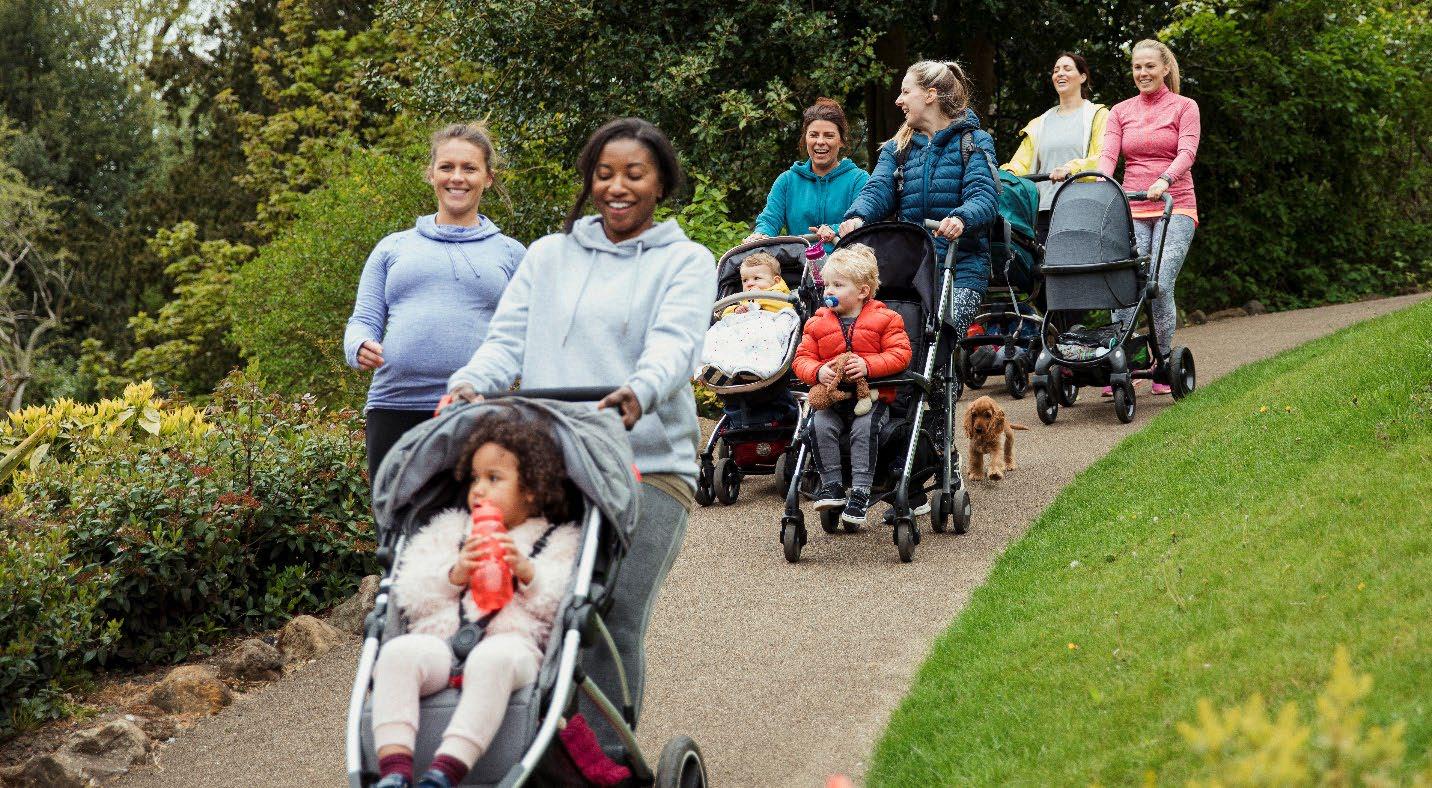
that any area that has little or no green space can be improved for the benefit of the community.
In order to provide clarity about what good Green Infrastructure looks like and how to plan it strategically, we worked with local authorities, developers and other stakeholders to understand barriers to planning, and what they consider to be most important. We used this to develop 15 GI principles that underpin the Framework. They provide a baseline for different organisations to develop stronger GI policy and delivery which we are calling “The Why, What and How Principles of good Green Infrastructure. “
We've also launched a publicly accessible Green Infrastructure Mapping Database that provides baseline data of GI across England to support the targeting of investment where it is most needed.
The new Levelling Up and Regeneration Bill includes a requirement for local areas to develop their own local design codes. We're developing a Green Infrastructure design guide that will help local authorities develop design codes that incorporate GI. We're also developing the framework for other organizations such as parks and green space managers and local communities to think more about Green Infrastructure and how it can meet local needs.
We're helping to create a level playing field for development by developing Core GI Standards
(updating existing ANGST: Accessible Natural Green Space Standards) that include an urban greening factor and encouragement for local authorities to set their own targets - for example around urban tree canopy cover.
We want to help break down silos between the different sectors - highlighting how collaboration and partnership working can deliver these multiple benefits and help unlock funding. We're clarifying the relationship between Green Infrastructure and Biodiversity Net Gain how they can help each other, providing information about new funding opportunities - for example a new 9 million pot from the Department for Levelling Up, Housing & Communities for the levelling up parks fund which will help to deliver 100 green spaces where they're most needed. Local nature recovery strategies and their priorities will help to inform Green Infrastructure strategies and vice versa and also bring in new funding.
We're going to launch this framework this coming December and are working with stakeholders on a range of options for announcements webinars and publications to create a buzz. In the meantime, please do explore the GI Framework web portal and the products released. There is lots of great information that can help in planning your GI network.
10
Planning with purpose
We must shift from putting nature around the edges, to building nature into everything we do says Julia Thrift, Director, Healthier Placemaking, TCPA (Town & Country Planning Association)
A few weeks ago I was lucky enough to visit a range of green infrastructure projects in Cornwall that had recently received funding. Among these innovative projects were two primary schools that had been given a small amount of money to green their playgrounds. What they had achieved was really inspiring.
One had made great progress in greening their playground – adding a green wall, planters a pond and other features in what was otherwise a very hard tarmacked space. The kids loved it and the teachers said that the greening had helped improve the behaviour of the kids in the playground. The other school however had gone even further - they'd use their funding not only to green their playground but to transform the way they teach and to build nature into everything they did. This picture is of a polytunnel is one of their classrooms. [see right]
Nature was embedded into all of their lessons. Outside each of the classrooms there were boot racks with muddy boots for the kids. They were out and about in nature. They were building dens in the playground. This was a school where instead of
having a cake sale to raise money, they sold the vegetables that the kids had been growing in the school grounds.
For me, this illustrates the big transformation that is needed - from putting nature around the edges of things to really building nature into everything we do. Our current planning policies in England are - from an environmental perspective - gradually moving in the right direction. Initiatives such as biodiversity net gain will certainly make a difference. But, our planning policy still adds nature in around the edges. It still puts buildings and roads and structures first and then fits nature in around what's left over. The Levelling Up and Regeneration Bill includes significant reforms to the planning system. But, while there are things to welcome in the Bill, it doesn't represent the radical transformation of planning policy that the country so urgently needs.
Planning policy should start with a very clear statement saying that the purpose of planning is to support the health of the planet and the health of the people who live on it. At the moment, planning is sometimes described as ‘a process without a purpose’. We at the TCPA think planning should have a very clear purpose about enhancing the well-being of the planet and the well-being of people. We continue to campaign for a national planning policy that puts the health of the planet and health of people right at the heart of everything it aims to achieve. We hope that you'll support us to do this.
11
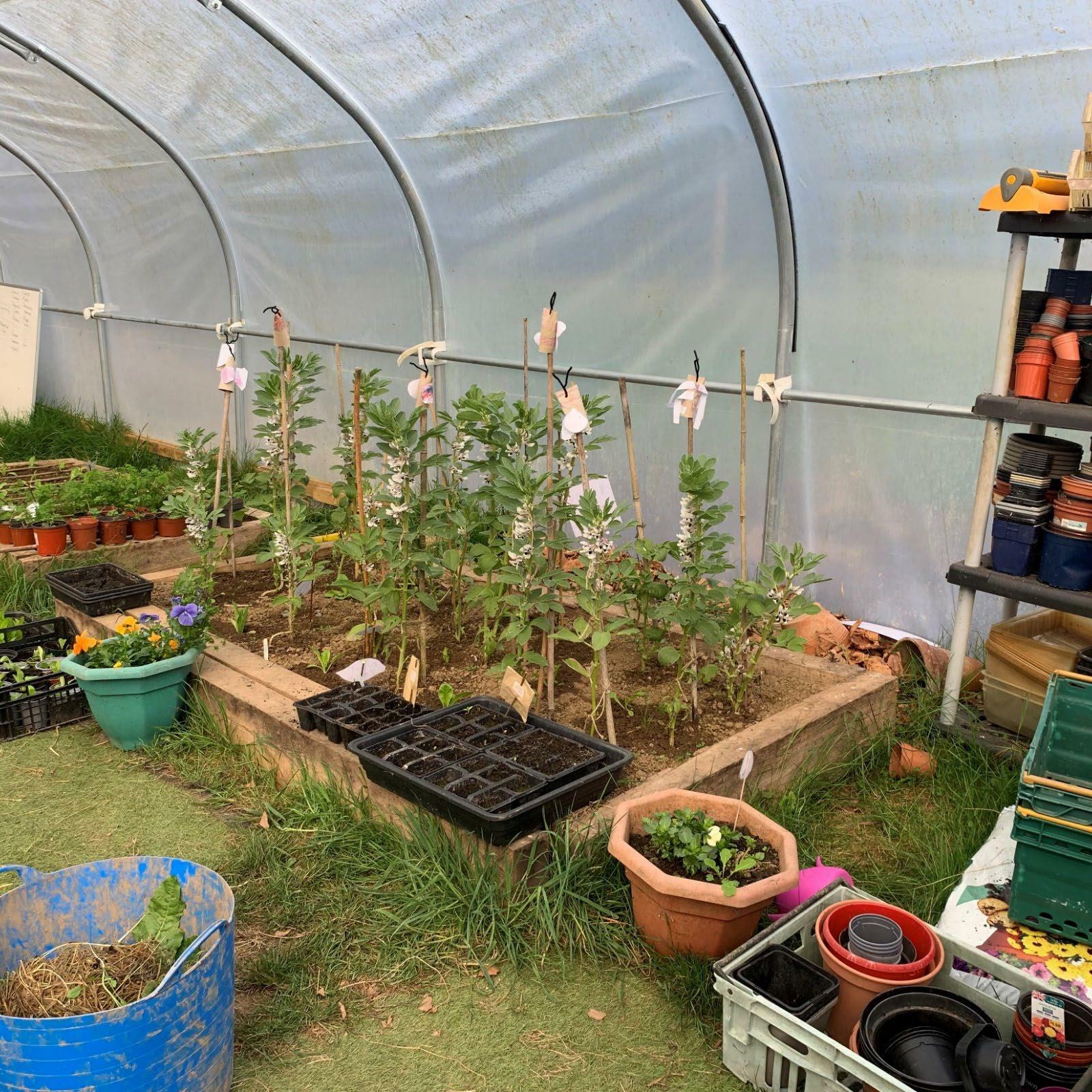 Image credit: Julia Thrift
Image credit: Julia Thrift
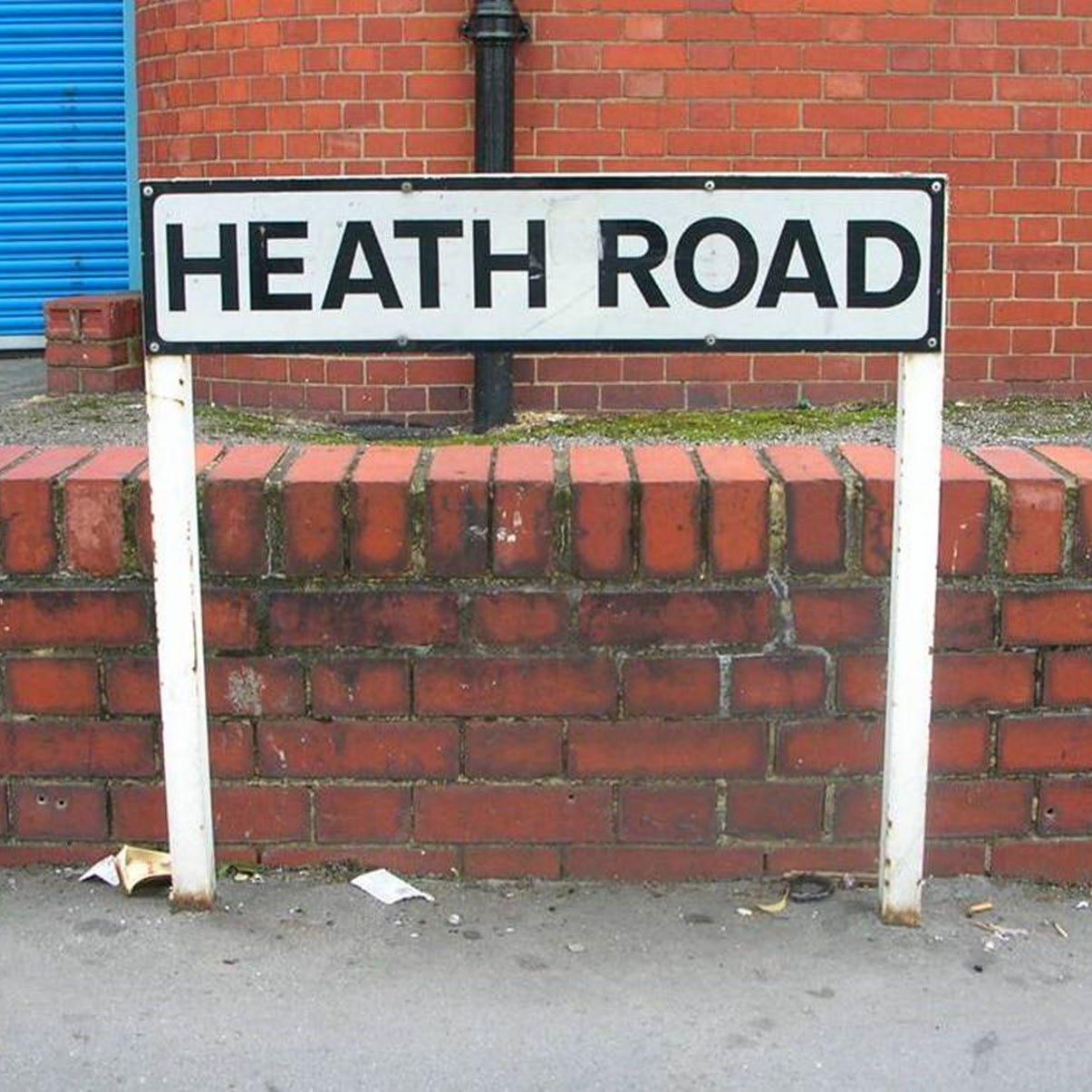 Image credit: Peter Massini
Image credit: Peter Massini
Making nature relevant
Integrating the benefits of nature in urban environments means thinking differently about nature based solutions to happier and healthier lives says
Pete Massini, Director of Future Nature Consulting.
I was born, bred and now live once more in rural Sussex. As a child, the month of May would be accompanied by the sound of cuckoos. When I went to London I realized that most people have never heard a cuckoo and it's not because people don't care about cuckoos, it’s because there are no cuckoos in London, there are no cuckoos in the middle of Oxford or the middle of Maidstone or the middle of Scunthorpe. So, if we want to build nature in, we've got to think about what nature means in terms of real relevance to different people's lives?
People need places to live and they need places to work. With nine million people in London- the basic laws of physics provide a challenge in terms of the space for both nature and people. Cities are designed primarily for people. They're buildings; they're structures - they’re not intrinsically natural environments.
My belief is that, in order to create places which build nature into urban developments, we need to think about what nature provides for us.
Of course, we need to do nature recovery in the wider environment , but when we're talking about green infrastructure and nature-based solutions in an urban setting, it’s about making sure that the nature and green infrastructure we are considering is relevant to people, because that's what makes it essential rather than just an aesthetic backdrop to people's lives. For example, when considering the impact of climate change how can you design drainage, and cool the urban environment in ways that use nature-based solutions?
Architects, landscape architects, ecologists and infrastructure engineers need to think collaboratively, and in an integrated way, to create designs and solutions that meet a whole range of requirements. Transport engineers understand how a bin lorry can get in and out of a new development –recycling and refuse collections are a an essential requirement for our daily lives; architects understand the building regulations which make our buildings safe. As ecologists we need to be helping to design buildings and landscapes that provide essential services because we are competing for space with other important and legitimate uses of the development site. Thinking in this more integrated way is certainly not easy - and there will be trade-offs - but without this mind-set, we end up with projects that don't really work very well at all for people or nature.
14
The green NHS
Rachel Stancliffe, founder of the Centre for Sustainable Healthcare describes some of the ways that CSH is helping to nurture nature connection into the healthcare system. One of the things that first connected me to the environment was health. When I was young, I started getting eczema and hay fever and as a result became very aware of chemicals in the built environment from an early age. The connection between health and the environment and what we are doing to ourselves has been part of my life ever since then. Centre for Sustainable Healthcare aims to bring the message of connecting health and environment to health care professionals in particular - and through them, to everyone who uses the health system.
One of CSH’s first Green Space for Health programme projects was NHS forest. We started off in 2009 by planting trees on health care sites. We felt that trees were a strong a symbol of the natural environment and planting trees on hospital grounds where they're visible was a way to enable people to establish a connection. Since then, the NHS forest has grown into a varied project with a lot of different aspects- around 300 healthcare sites across the UK have joined our alliance, and 100,000 trees have been planted on or near to their estates
The health service can have a slow pace of changeconstantly dealing with emergencies and many other issues means that there can be limited capacity for changing things that may feel “nice to have”. But over the last few years the value of the interconnections between health and nature has clearly become more appreciated. Covid has helped people to stand back and re-engage with nature and to think differently about what we want and need for our own health and our own well-being. As a result, concepts and projects like the NHS Forest have really grown.
We have started to develop a Nature Ranger programme because we realized that to get busy people and patients and other people engaged, you need a dedicated resource. A Nature Ranger is based on an NHS site but they are an ecologist by background and are actively responsible for developing deeper nature connection. There are five Nature Rangers now in different hospitals around the country and we hope to spread that model.

15
Image credit: Rachel Stancliffe
Another wonderful example of integrating health and nature on a significant scale, is Alder Hey children's hospital. This hospital was designed to fit into the natural landscape - and actually built into a park. A crucial step in the development was consultation with patients, and in particularly with children, to ensure that the building was co-designed with the users. Of course, most of the buildings that we have in the NHS are not being built from new, but there is also lots that we can do with retrofitting- to integrate use of nature into how the health system
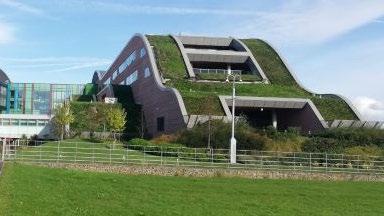
works. Take rehabilitation for example
we can create walkways on hospital sites that enable people to practice steps that will help their bodies get back to health while experiencing the natural environment. If we think creatively about how people experience nature as part of health, we can help make those connections in terms of their everyday work both as staff and as patients.
16
–
More than just a number
The biodiversity net gain agenda provides an opportunity for us to push for more, says Ben Gardner from Ecology by Design and Civity. As an ecology consultant my role is to aid developers to think about integrating ecology and environment into their plans. Nitrate neutrality and Green Belt concerns impact every county across England, causing huge planning issues for councils, developers and communities across the country Since last year, this has been exacerbated by the latest buzz word – Biodiversity Net Gain. While all new developments will be required to demonstrate a 10% increase in biodiversity from 2023, the approach and systems for making it work are still being identified.
To make building nature in work we need to make sure that the landscape and the wildlife is something that everyone can participate in and enjoy. Biodiversity offsetting and habitat banking all play a huge part in this, but, I believe that focusing our attention just on biodiversity net gain isn't going far enough. What we should really be talking about is
“environmental net gain”. Or let’s take it even further and talk about “mutual net gain” or just “net gain” for everybody involved.
Over the last couple of years we've all seen how important it is to be connected with green spaces whether that was in the urban environment or in the rural environment. We need to get better at recognizing the full potential of our natural capital and the benefits it brings and offset this on a much larger scale - as big as we can possibly go. Be as ambitious as we possibly can.
1 in 3 people currently don't have adequate access to green space. How can we use the BNG agenda to help address this? Leveraging the funding, the pools of cash, and the pools of expertise from large-scale habitat banking or biodiversity offsetting projects and bringing this to bear onto the urban environment will be beneficial to all.
So, my challenge to you as you read this is to get involved in this conversation and try and look at biodiversity gain not as a challenge, but as an opportunity. Can we try and do more. Can we go for net gain overall.

Diverse lenses of nature connection
In considering how to champion nature for everyone, it is vital that we recognise the diverse lenses of nature connection says Geeta Ludhra, lecturer at Brunel University, Trustee of Chilterns AONB and community walk leader.

My story into connecting with nature is through the healing of childhood intergenerational trauma – and more recently - menopause trauma. As a Britishborn South Asian woman of colour of first generation working-class migrants, I embody the stories of my community in relation to nature connections experienced through faith, spirituality, religion, race, and gender, ancestral cultural knowledge and philosophies, folk stories and ayurvedic healing.
As organizations and individuals we must critically question and unpick the hierarchy of connecting with nature experiences. When I entered the space a couple of years ago - I didn't see people or stories like mine being celebrated or valued.
The nature experiences of people of colour or women like me were represented as lacking knowledge or felt colonized and inauthentic. So I found ways to seek out and nurture the nature stories of people that connected with my ancestral history.
18
Image credit: Geeta Ludhra
I felt inspired when I started to find Indian feminist scholars like Vandana Shiva an Indian environmentalist who connects to the soil in powerful ways. But, I continue to question whose voices and nature stories are heard, centred and amplified.
As a teacher educator I’m very aware of how language carries power. Creating deep connections in, with and through nature requires us to move beyond complex terms and scientific knowledge. The Meta language around nature includes some but excludes others. Of course we need Meta language and we know it equips us powerfully, but in my community work that's not my starting point - it's always the emotional and the psychological connection with nature. The health and well-being market is suffocated and saturated through a
And, who's willing to give up their power? We need much more than diverse photo banks of people of colour in nature. How deep do you want to go? Are you willing to get uncomfortable?
In his book “soil soul and society” Satish Kumar reminds us that the motivation behind our actions determines the quality of our actions. If our politics is guided by genuine service to the community (not, “you are the poor people and we're givingnature to you”, rather “you already understand nature but with a different way of understanding”) then, our politics becomes spiritual. When the right people are leading nature spaces they will reach out through deep
commercial lens, with a dearth of research on green prescriptions and nature benefits. If I had talked to my mum and dad while growing up about nature as “health and wellbeing”, they would have laughed. For my parents, as first generation migrants, engaging with nature was about surviving not thriving. So, again, I encourage you to question whose lens are health and nature benefits written and presented through.
When we talk about inclusion and diversity partnerships, are we demonstrating a tokenistic equality diversity and inclusion agenda or are we genuinely listening, engaging and acting? How do the power dynamics and politics play out in designing and connecting people with nature spaces? Who’s partnering with who and why?
cultural knowledge and research that is led through a decolonizing lens. We are more likely to find authentic ways to build nature in.
Weare not hard to reach, it’s the institutions which are hard to reach. We have to be willing to get uncomfortable, uneasy, give up our privilege and power, to de-centre traditional dominant narratives of how people and nature connect.
19
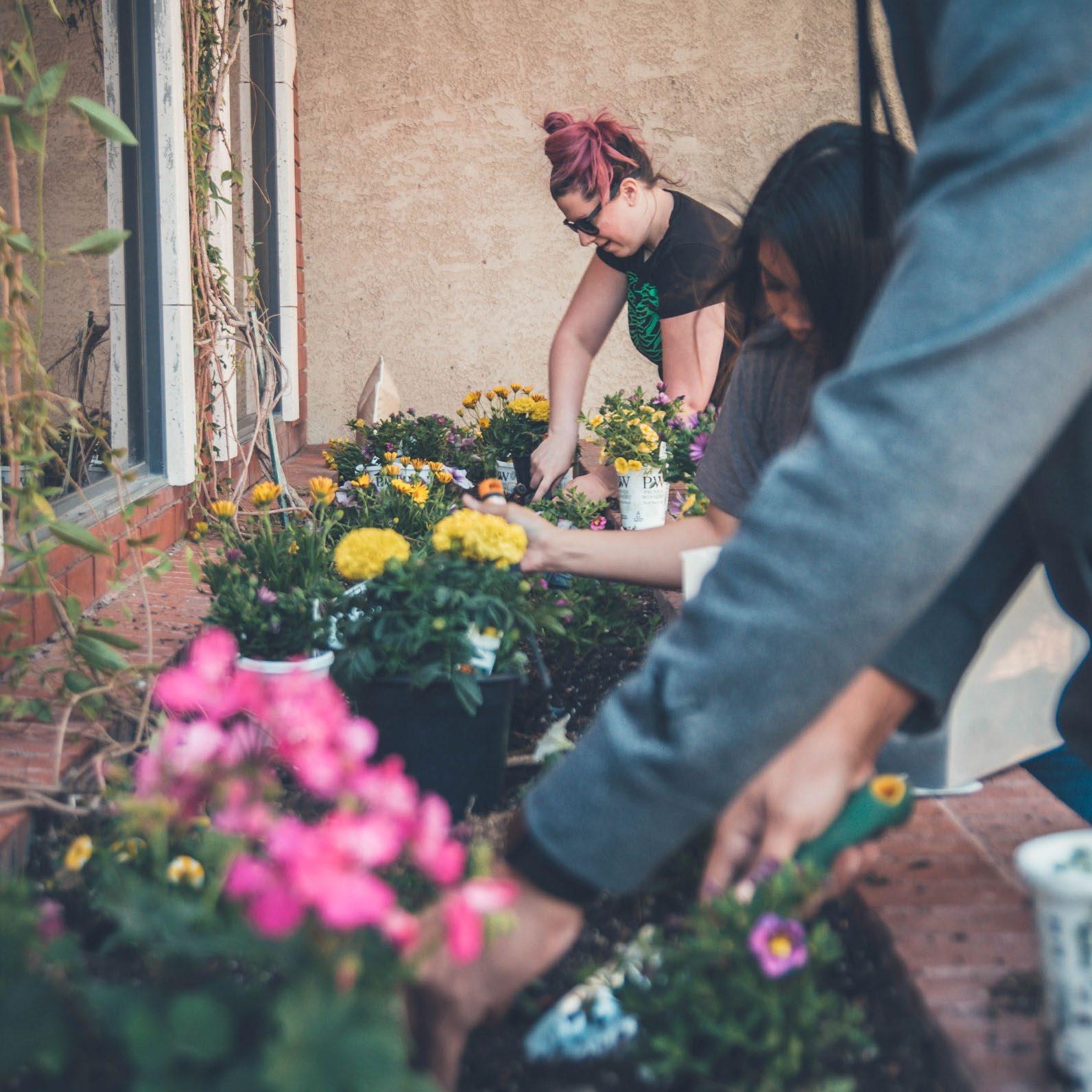 Image credit: Unsplash
Image credit: Unsplash
Outcomes not outputs
Earth Lab is Earth Trust’s award winning learning building, which was constructed in 2021 with funding from OxLEP and others.
Nigel Tipple, CEO of OxLEP, talks about the need for commitment to partnership, investment, and outcomes when seeking new approaches to Building Nature In.
The starting point for Earth Lab was partnership. A number of years ago now, OXLeP came across a project proposal from Earth Trust that was different from the traditional builds that we tend to deal with in government funding streams. This was a project that was going to make a difference - not just through the provision of a new learning space, but by being able to use and develop new technologies as the building was constructed, with the advice and the capability of the exciting team that Earth Trust had pulled together.
In this context, partnership wasn't just about having a funder, an intermediary and a project sponsor. No, this was an ongoing journey that we all had to go on together. One that enabled us to adjust and respond to ongoing challenges and changes in need and unanticipated external factors like Covid and EU Exit. So, good partnership was the first and foremost
priority as we worked together to do things differently and persuade others that this was the right project to invest in.
In my world, outputs are everything. It’s what determines whether or not you're going to get funding. It’s what determines whether or not government will accept a particular set of arguments. But, the success of Earth Trust’s award winning Earth Lab building demonstrates the importance of focusing beyond outputs - towards outcomes – the ultimate end return on investment of money and people.
Yes, we invested a lot of time, a lot of people resource, as well as a lot of money. But, this investment has created a space that has long term outcomes for our future generation - a landmark building which we can use to leverage more interest and appetite for funders and developers, by demonstrating the possible. We’ve got a brilliant building and an incredible showcase in terms of infrastructure and capability but beyond this, it’s what goes on inside this building that really counts. It’s the people and it's the actions and it's the activities that are going to make a difference. Earth Lab, a building that demonstrates the principles of Building Nature In will be the site of learning and inspiration for thousands of children, young people and adults who will be the changemakers of tomorrow.
22 21
 Image credit: Unsplash
Image credit: Unsplash
Time for action
Putting people, wildlife and climate at the heart of development requires a more creative and collaborative approach to how natural capital and the built environment integrate. To be successful, it has to be a co-creation between the public, private and third sectors.
Our panel, Jane Houghton, Julia Thrift Pete Massini, Rachel Stancliffe, Ben Gardner and Geeta Ludhra discuss.
What do you feel needs to be done to encourage more and better partnerships that can achieve some of the goals we've talked about here?
GL We need to look at the power and the privilege that different partners hold - break up the jigsaw and put it back together by looking at the different areas of the community that are included. Because unless we have representatives, reflective of all people of society we are not going to have genuine partnerships.
JH Within the Green Infrastructure Framework we start with partnership and joint visioning. The new concept of the nature recovery network is being led by local nature partnerships based within different counties. Within those nature partnerships we try to engage a broad range of people across sectors from business to health, the environment, young people and so on to ensure that those partnerships have wide representation and that society is reflected in their decision-making, and their points of view.
PM Partnership has become a rather hackneyed phrase, that I think we use too glibly to describe a whole range of coalitions and collaborations with many different purposes. A partnership to get a building constructed is very different from one that’s about bringing communities together to determine
what they want and need. Sometimes a very tightly defined partnership with a particular purpose in mind is perfectly fine but if it's about coming up with a vision or a strategy or a proposition you need to bring together a much wider range of viewpoints and stakeholders to have that discussion – that’s about dialogue and open conversation to reach a vision rather than “partnership” with a specific purpose. As a former a policymaker I know that the language of policy often avoids being too prescriptive, but we need to be careful not to become obfuscatory.
How important is it for all these issues to be built into the planning process?
BG The government has obviously done a lot to introduce initiatives like biodiversity offsetting/biodiversity net gain, habitat banking. But, while local authorities and others in the planning system are being told to do this, they are not being told how. So it's hugely important that they work in partnership with experts to understand and decide how to get the greatest benefit for biodiversity as they possibly can.
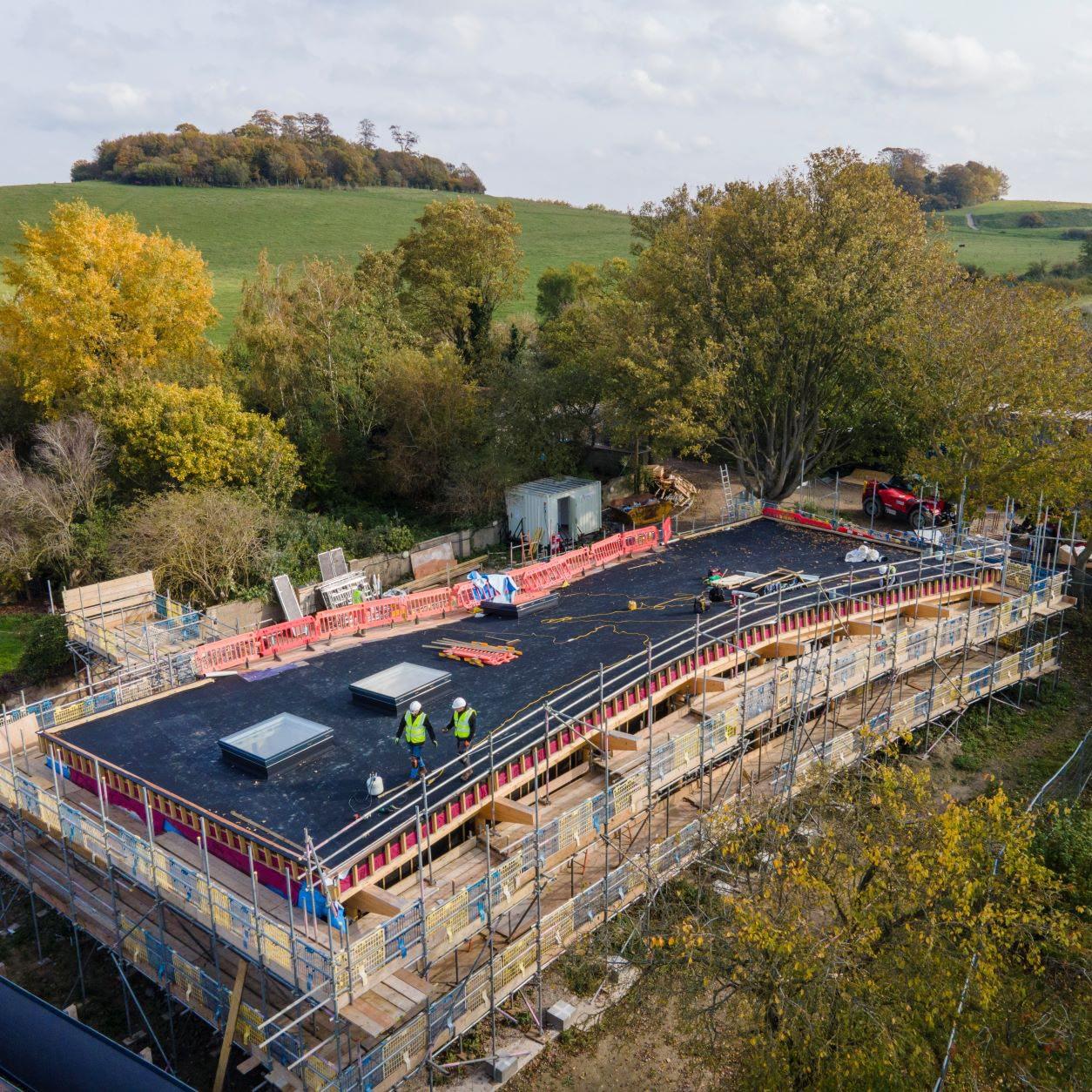 Image credit: Burst Design
Image credit: Burst Design
JT : Planning is inherently political - it's about how we use the scarce resources in the country, how we use our land and who gets what. So people, quite rightly, will have something to say about it. We sometimes see delays in planning caused by public objection as a fault in the system, but perhaps that's planning working as it should - allowing people to voice their opinions, allowing discussion? It's always going to be a compromise. As Geeta mentioned, looking at who has the power is hugely important. Planning is complicated and it can be difficult for communities to engage with in an informed way where they can bring their experience and their knowledge. It requires a bit of support and it takes time, which is necessary if it means that more people get their say. If we're really going to put the environment at the heart of planning that means doing things differently – and there will be some crunchy, difficult bits where things don’t happen as they’ve always done. But perhaps we should see that as a sign of progress? If it's just business as usual we'll carry on creating the same problems as we've had for the last 30 or 40 years.
JH: A really key principle is to engage in a strategic way around planning for places right at the start of the conversation. That includes the concept of the right development in the right space and place - part of which will mean considering the green infrastructure standards. By having that really early conversation, these tensions can be ironed out in a win-win way so that planning isn’t overturned when a massive amount of work has already gone into it. In Natural England we're starting to really focus all our energy at the outset of those conversations because we feel that's the place where we can have most influence and we can get the right decisions made
then that will then flow out to the development further down the line.
Audience questions to the panel
How do we get house builders and developers to fully commit to green infrastructure and/or delivering low carbon homes?
JT: The housing market isn't like other markets - if you want to buy a car you can look at a magazine or a website that will tell you “this car is good for that” and “this car is quite good for this” and you'll choose your car based on how it aligns with your preferences. With housing, buyers (or renters) need a home in a particular place, and they need one they can afford. With affordability being such a critical factor, there aren't the usual pressures to improve and evolve with consumer preferences because people desperate for homes will buy what’s provided whether they like it or don't like it very much. I think the only way to raise standards to get the high quality green infrastructure that we need is mandate them. If standards become required as part of national planning policy, builders will factor delivering those standards into the price of land. If it's optional, it will happen in some places - probably the wealthier places with the higher land values - but it won't happen in the poorer places with the lower land values, where people tend to have the worst health.
26
While no-one would argue with the need to support greater biodiversity, health and climate outcomes, who is going to pay for the changes we need to make, given the high price of land? There is a risk that we push up the cost of houses at a time when we need many hundreds of thousands of new homes at affordable prices.
BG: For years, we’ve been following process that has had some successes but largely has failed in terms of biodiversity. There's been a huge decline in species numbers and diversity so we can't just carry on doing what we've always done. The biodiversity net gain agenda gives us an opportunity to go beyond the protection of individual sites or individual species on sites, and apply this strategically. If we look nature recovery areas in Oxfordshire for example, the funds will largely come from BNG and developers but without the risk of losing lots of housing units on your site. Developers will be able to build biodiversity into their sites andmay be able to build more units than anticipated by offsetting negative impacts in places with the most benefit for biodiversity
RS: This argument that change will cost more has been one that we have had to counter in the healthcare sector for a long time. For years we have made the argument – and demonstrated – that change doesn’t have to cost more - economies of scale can help to lower supply chain costs, for example. And then there is the bigger question about whether are actually counting the real cost to begin with: we want the outcomes of health and healthy places but we're not costing the inputs properly. If we do, then prices will change and the price of places without green space built in will actually cost more because of the health impacts on the people that live there and the damage that is
being done to the environment. There are potentially some useful lessons from the health sector – while policy mandates are in discussion, we can still do a lot to educate/inform people who are making decisions on the ground.
PM: I think government policy around BNG is trying to deliver an overly simple solution to a really complex problem. BNG doesn't really take into account that development is a complex trade-off between land prices, land value, and meeting existing objectives and policy requirements. When government introduced the idea of BNG there was an assumption that we had loads of cheap land available to deliver offsetting in areas requiring nature recovery. But, most viable land is in private ownership, and the value of agricultural land is going up because of the crisis in Ukraine. There will be a market in that land and not all offsetting will go into the areas where people expect it to go because developers will quite rightly choose options that are most beneficial to them. So it's likely to be a bumpy ride for the next couple of years as this policy actually lands in the real world, and as developers and landowners understand the relationship between the requirement of BNG and the market that the government intends to develop for offsetting.
We’ve talked about vision in the sense of the right place and the right scheme, do you think people are listening and if they're not listening how can that process be improved?
GL: Sometimes, we have agendas for listening and if things don't match our agendas we can quite easily switch off. We need people in positions of power who are able to hear - sometimes you can't hear because you don't know what you're supposed to be hearing.
My story of healing intergenerational trauma as a brown woman through nature is very different to my white counterparts for example. So we need people in positions who know these stories and are equipped to listen.
We've talked a lot about the benefits of access and connectivity to nature , but, not everybody sees those benefits. Among those who are most effected by the cost of living crisis ,there are parents who can’t let their children go and enjoy muddy play because they can't afford to run a wash. Or, they are worried about the safety of their children in the local park. We need to work with local communities - as Geeta says - to understand these stories and understand how the different interactions with nature and how we can support work at a neighbourhood scale. We’ve talked a lot about big developments - that's really importantbut it's in our existing communities where the largest health inequalities exist and we've got to make those a priority.
‘Outfall safaris’ where it takes people out into their local neighbourhood and really encourages them to look at what is there. They take people to a river and point out all the outfalls are to help them understand that the water you use in your house, or when you wash your car on your drive ends up in the river. They also do a basic asset audit of your local community –point out bits of green space and asking people to think “what are they for? Who owns it, how is it maintained and why?” Coming here today, I drove past acres of green spaces, road verges and roundabouts which are mown every two weeks – we need to ask - why do we do that?
Are there examples of quick wins – at a local level –that we could replicate to help move this agenda forward?
PM: There are a couple of examples that spring to mind for me from working in London. Thames21 runs
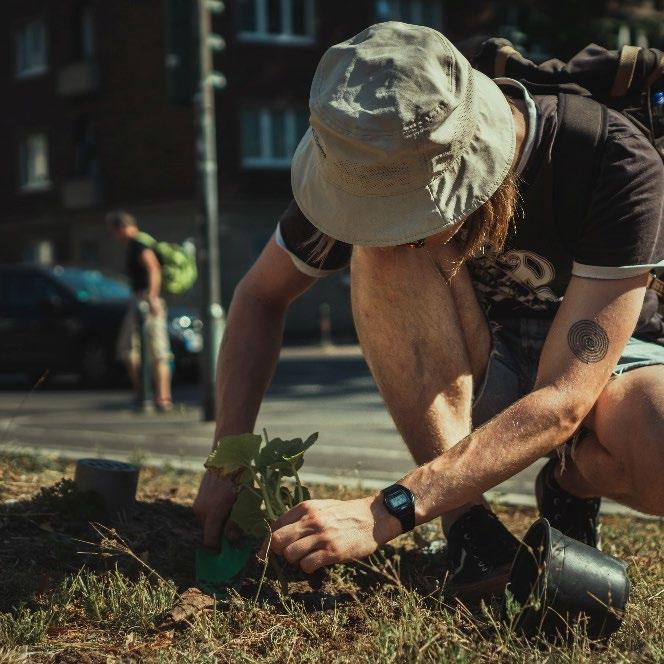
28
Image credit: Unsplash
Closing words
Jane Norris, Director of Edgars shares her key takeaways from the panel discussion.
This moment is an opportunity to make a change. Public awareness of the value of access to nature has massively increased. Covid shifted our reality, and made many of us think about what's important to us. In addition, recent legislative changes signal increased political will - the environment act, and requirement for biodiversity gain, the levelling up and regeneration bill all bring new opportunities for consultation and comment on what's coming from the government. There is new emphasis on the environment within design codes and the national planning policy framework that needs to be integrated – and interrogated – within planning application consultations. Everything that's built from now on without a zero carbon or biodiversity agenda being taken into account is a retrofit problem.

Oxfordshire is an area where innovation and doing things differently is absolutely at the forefront. We have a significant regional track record in collaboration and problem solving, and I am confident that we can make great progress together in the challenge to build nature in.
But to do this, requires a number of things. Something I had not expected to take away from this event, was the need for humility: to recognize that we don't understand everything and everybody has a different perspective. Humility enables us to listen more, hear the perspective of other people and take on board what they can bring to the table.
So, stay humble, make representations when there's an opportunity at national planning policy level and keep collaborating. It doesn't matter if the conversation is difficult - the conversation has to keep going because we are at a critical point. Let’s use our collective talent and knowledge to create something better for everybody.
29
Image credit: Unsplash
Let’s work together
We are seeking opportunities to bring together partners and collaborators who share our vision and can help us apply our 6 Building Nature In principles to create new learning and evidence.
Please do get in touch if you would like to discuss ideas. Jayne.Manley@earthtrust.org.uk
© Earth Trust. May 2022.
Little Wittenham, Oxfordshire, OX14 4QZ
Charity Reg. No. 1095057
Tel: 01865 407792
www.earthtrust.org.uk
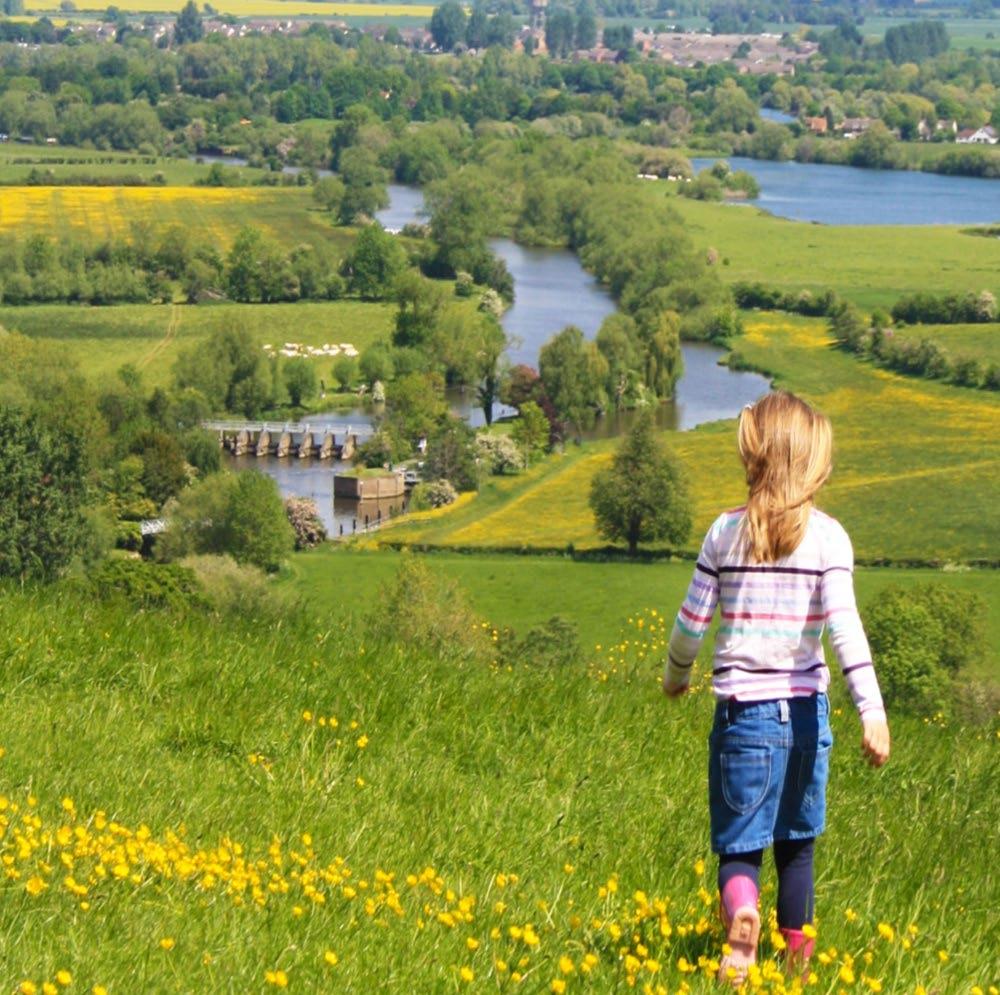
Image credits
Front cover: Burst Design,
Back cover: Verity Warne








 Image credit: Agile Homes
Image credit: Agile Homes





























 Image credit: Julia Thrift
Image credit: Julia Thrift
 Image credit: Peter Massini
Image credit: Peter Massini




 Image credit: Unsplash
Image credit: Unsplash
 Image credit: Unsplash
Image credit: Unsplash
 Image credit: Burst Design
Image credit: Burst Design


